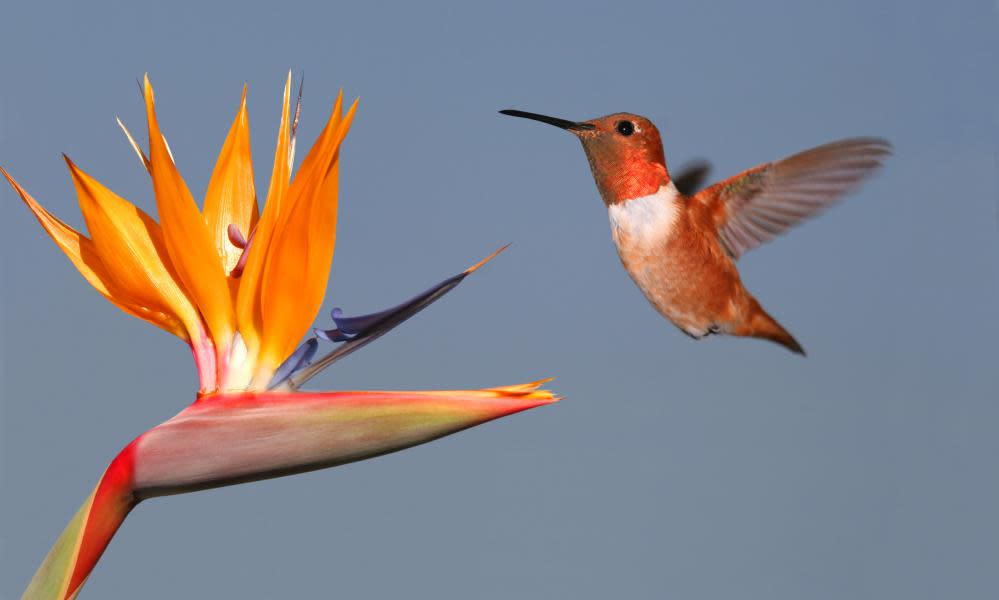Bright feathers, bright brains: hummingbirds 'can order numerically'

Hummingbirds are not only bright in appearance but also in brain, it would seem, with new research suggesting the tiny creatures are able to understand a numerical concept of order.
While hummingbirds have previously been found to visit flowers in particular sequences when foraging, researchers say the new study suggests this process could be based on the concept of “first”, “second” and so on, rather than features such as specific flower location or nearby landmarks.
However, it does not mean that hummingbirds can count.
“Counting has a more anthropocentric connotation,” said Dr Maria Tello-Ramos of the University of St Andrews, a co-author of the study. “This is more like ordering things in a sequence. We cannot say [the hummingbirds] were counting, ‘One, two, three, four,’ but that they knew that [the] fourth [flower] was different from the third flower that they encountered,” she said.
Tello-Ramos added that such a skill could help hummingbirds attach information to their foraging sequence, such as that the second flower has run out of nectar, meaning they know to skip it – even if it looks unchanged – and move on to the next in the sequence.
Some other animals that have undergone training, including rats, monkeys, bees and parrots, have previously been found able to grasp that items in a sequence can take a particular order based on an abstract numerical concept.
However, the team behind the new research said their study was the first time such a capability had been shown in a wild, free-living vertebrate.
Writing in the Proceedings of the Royal Society B, Tello-Ramos and colleagues reported how they made their discovery by presenting nine male rufous hummingbirds with a row of 10 identical fake flowers on sticks spaced 20cm apart, with each flower constructed from a foam disk with a tube in the centre.
To train the hummingbirds, the team filled the inner tube of the first fake flower in the row with a sugary solution. Once each hummingbird visited this flower four times in succession, the flowers were shuffled – to take account of any subtle differences between them – and the first flower in this new row was filled with a sugary solution.
The training was repeated with the sweet treat in the second, third and finally the fourth flower. The team found all the hummingbirds learned to fly to correct flower, with the one containing the sugar visited significantly more than would be expected by chance during the training.
To check that the birds were not simply learning which flower to pick by its distance along the row, the team presented the birds with a row of randomly spaced fake flowers. The results show that the birds had a clear preference for flying straight to the flower containing the sugary solution.
Tello-Ramos said the findings added a numerical concept of order to a growing list of information that hummingbirds use to get by, including location and flower colour. “If the information is relevant, the humming bird will use it,” she said


